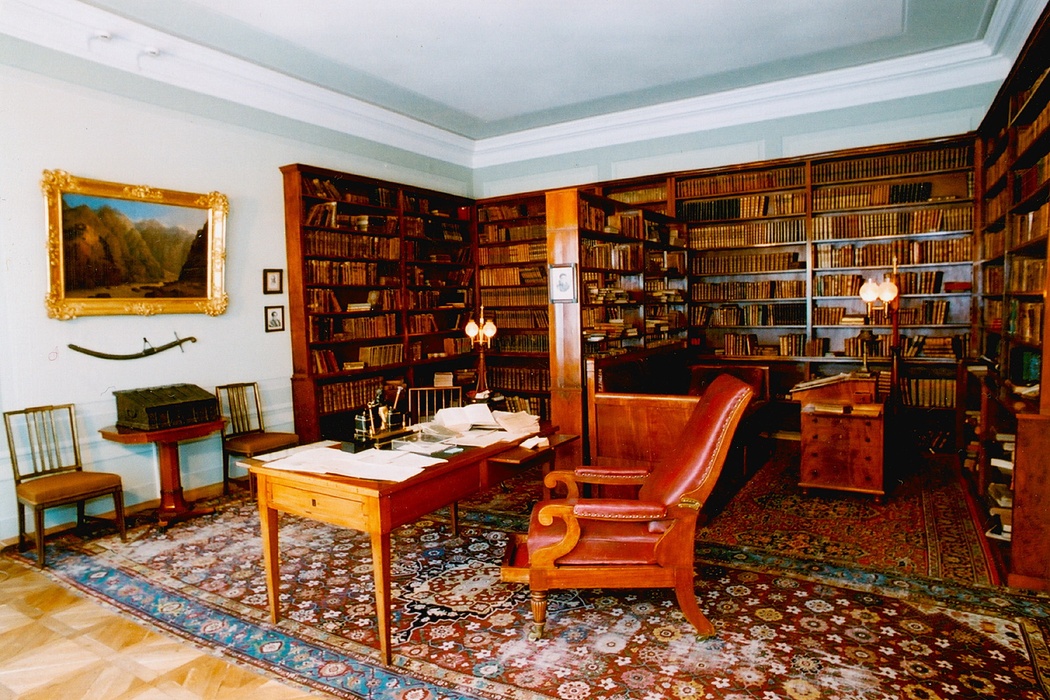The Alexander Pushkin Museum and Memorial Apartment
Above: Alexander Kozlov, Pushkin on his deathbed, 1837, courtesy of Anna Prosvetova
If you are an admirer of Russian literature, St Petersburg is an unmissable destination, where one can discover locations from great Russian novels as well as visit actual historical apartments of famous writers, turned into literary museums. One of the best places to start your journey is Moika embankment, 12, the last apartment of Alexander Pushkin (1799 – 1837), a great Russian poet who shaped the language in which Russians have written ever since.
Alexander Pushkin lived in many places, and his apartment at Moika, 12, may be seen as one of the major locations, among Tsarskoe Selo and Mikhailovskoe estate close to St Petersburg. He lived here during one of the most difficult times in his life, from 12 October 1836 until his death day, 29 January 1837 (old style). Shortly after his death Pushkin’s widow, Natalia, and her children left the house, and only in 1925, after many reconstructions and modifications, did it officially become a museum. The nineteenth-century Russian intellectuals had been shocked by the early death of a brilliant writer, and Pushkin’s friends felt it their absolute duty to preserve the chronicles of these tragic days in January. Describing these events in a letter to Pushkin’s father, Vasily Zhukovsky, a fellow poet and a close friend of Pushkin, had drafted a plan of the apartment, which underlined the historical reconstruction of the place as a museum.
It was Pushkin’s last house, where he died after his duel with a French baron George d’Anthès in 1837. Therefore, this place became a shrine to the poet’s memory, displaying tragic relics of his last days: the blood-stained vest he was wearing during the duel, the sofa he died on, and the clock, stopped at the time of his death – 2:45pm.
The study was an integral place where Pushkin lived and wrote, and is now the heart of the museum. Recreated as a proper writer’s space, it includes his div and personal desk set including a black boy figurine and the writer’s stylus. It was the space where Pushkin created his great works, including The Captain’s Daughter (1836). According to Zhukovsky’s letter, the study also holds the poet’s library with approximately 4,500 volumes, including books in fourteen European and Oriental languages.

Alexander Pushkin's study. Courtesy of Anna Prosvetova
The room presents several posthumous portraits of the poet, including his death-mask, depictions of the duel and a pair of dueling pistols from the 1830s, similar to the ones used by Pushkin and D’Anthès. The museum also preserves numerous notes and letters from Pushkin’s friends and admirers which had been sent to the apartment during the poet’s last days. These precious mementos remind visitors how much Pushkin’s contemporaries valued and appreciated his talents. One of the most recent additions to the collection is the sofa on which Pushkin died, presented by descendants of the family’s friends in 1920s, recently discovered in 2010.

Courtesy of Anna Prosvetova
Alexander Pushkin had a short, but very vivid and diverse life, and all the places he lived bear a certain character, reflecting a particular periods in the poet’s life.The Moika, 12 apartment marks the end of Pushkin’s journey, and will remain a place of remembrance to one of Russia’s greatest sons.
To learn more about the museum please visit the website.
This article was originally published on Russian Art and Culture.

Manuscripts and sketches by A. Pushkin. Courtesy of Anna Prosvetova